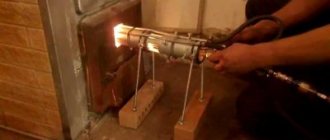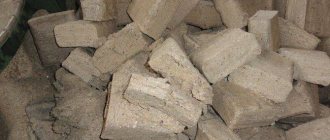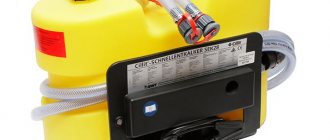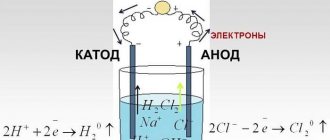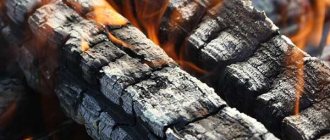Spring has arrived, and with it the time for barbecue. But what do you need to cook a delicious meal in the fresh air?! Of course products! But you can’t do without fuel for a fire, because the aromatic smell of smoke is 50% of success. You can take fruit firewood or any other wood left over from last season. But it is best to use charcoal. Its consumption is low and the heat is stable. Nowadays a huge amount of such raw materials is sold, but we are thrifty owners, aren’t we?! Therefore, I decided to write about how to make charcoal with your own hands at home.
Preparation of material
Not every piece of wood can use charcoal for cooking. These are fruit trees (pear, apple, cherry), deciduous trees (alder, oak, maple) and the common birch. Coniferous species are not suitable at all. Such raw materials contain resins (this will ruin the taste of the meat).
Construction scraps are not used to make coal for barbecues: impregnations and adhesives will leave carcinogenic substances in the coal during combustion.
Birch is not the best option, but it is a common tree. The coal turns out a little hotter than necessary. Although, knowing this feature, you can adapt and make great barbecue.
The second requirement is dry firewood. Moisture is harmful for pyrolysis. In industrial production, raw materials are dried in special ovens with gases up to 150 ° C, and when burning “for yourself” you need to either let the wood dry or use drying material.
Rotten wood cannot be burned into charcoal.
The bark degrades the quality of the coal and, if possible, should be removed from the firewood.
Scope of application
Charcoal is used in industry for the following purposes:
- for use as part of filters;
- for melting crystalline silicon;
- for use in metallurgy (saturation of steel with carbon, production of pure alloys);
- for the production of glass, some types of plastics, paints;
- for the production of natural dye for the food industry;
- for the production of activated carbon;
- for use in agriculture;
- for use as a convenient household fuel for stoves, fireplaces, barbecues.
When burned in stoves and fireplaces, this type of fuel burns with virtually no flames, providing even and intense heat. The most highly valued product is grade A, which is made from hardwood.
Important! If charcoal is used indoors (for heating or cooking), it is recommended to light it without using chemical kindling agents. This will avoid the appearance of an unpleasant odor and harmful substances falling into the food. In this case, coals are ignited using paper and dry splinters.
Burnt charcoal
The essence of the process is to ensure that the wood does not burn completely.
When raw materials are heated with limited oxygen access, a carbon frame remains, replicating wood. This process is called pyrolysis. The operating temperature for wood pyrolysis will be 350 °C. During pyrolysis, cellulose undergoes thermal destruction, which results in the formation of coal and pyrolysis gases.
A large number of pores contributes to the rapid burning of charcoal.
The mass fraction of carbon in charcoal is 50%.
Burn coal away from buildings and forest plantations. Follow fire safety regulations.
There are several ways to prepare charcoal for a barbecue.
Properties
The beneficial properties of this fuel are determined by several indicators. First of all, they are determined by the combustion temperature of the charcoal. Thus, pressed fuel is actively used in the smelting of cast iron and steel. Reaching a high combustion temperature during melting (over 1350 degrees), the chemical composition of charcoal acts as a catalyst for the reaction in the metal. In blast furnace production during the smelting of cast iron today, the share of fuel used is small, only 7-8%, but the cast iron produced is of the highest quality. This is achieved due to the properties of charcoal - it does not contain substances that, when heated, form volatile gases, and during combustion, impurities of substances that deteriorate the characteristics and structure of the metal. The high density and specific gravity of charcoal used in metallurgy make it possible to maintain the uniformity of the smelting process without the use of additional technologies.
Among the beneficial properties of charcoal are its high combustion temperature and long-term release of high temperature heat. This is especially clearly demonstrated when preparing dishes on the grill. Once ignited, the fuel quickly reaches a high temperature and maintains combustion for several hours.
An important indicator for fuel is the ash content. According to GOST, the highest class of charcoal when burned has an ash content of 2.5 to 3%. For domestic needs, class B is usually used; it is suitable for both heating and cooking. Unlike the highest class with a higher combustion temperature, the use of class B coals poses less danger, primarily due to the lower combustion temperature - it is about 300 degrees lower. This difference between the combustion temperatures of the two types of charcoal is associated with the structure, size of the bunts and the type of fuel preparation. A higher temperature is obtained when coals from denser layers of wood are burned. In addition, storage of class A material provides for an increase of up to 20% in the presence of water in the volume of the entire mass.
An important indicator for charcoal is the homogeneity of the mass, so in the total mass of grade A, the 25 and 12 mm fractions should be no more than 12% in total, while at the same time there should be no smut in the composition of the volume at all. In the artisanal production of charcoal with your own hands, the properties are determined by the color, size of the smut and the amount of dust. It is believed that the larger the fraction and the more saturated its color, the higher its quality. In many ways, this method is justified, since it indirectly indicates the chemical composition of the fuel and the presence of a large amount of carbon in it. A more in-depth laboratory chemical analysis can show the presence or absence of sulfur, phosphorus, heavy metal salts and individual resin-based compounds in its composition. During laboratory analysis, the ash content of the material is also checked. For premium quality fuel, the ash content is 2.5-3%, for average quality it is 3.5-4%.
The density depends on the brand and type of wood from which it is made. The weight of a standard volume of fuel is 1 cubic meter. meter is:
- From spruce wood – 100-120 kg;
- Pine – 130-140 kg;
- Birch – 175-185 kg;
- Bukovogo – 187-195;
- Oak - 200-215.
The material itself is very porous; if we take the ratio of the pore volume to the total volume of the substance, then for birch charcoal it will be 72%, for spruce charcoal 80%. Because of this, the specific density of charcoal, depending on the material of origin, can be:
- Spruce – 0.26 g/cm3;
- Pine – 0.29 g/cm3;
- Birch – 0.38 g/cm3;
It is the high porosity of the material that requires special care when lighting in the grill and barbecue. First of all, before ignition, you need to treat the coals with an alcohol-containing liquid and give a little time for it to be absorbed and penetrate as deeply as possible into the pores.
Another indicator of fuel - heat capacity depends on the temperature and humidity of the material. For dry fuel (with a humidity of 7-15%) the average heat capacity is 0.18 kcal/kg; for absolutely dry fuel with a humidity of 2-4% the heat capacity is 0.2 kcal/kg.
The calorific value, that is, the ability to release heat, is about 7500-8170 kcal/kg at a temperature of 380-500 degrees.
Application
Today, the use of charcoal in everyday life mainly comes down to three main areas. First of all, you need charcoal for a grill or barbecue; a long burning period, the absence of harmful smoke components and uniform heat allow it to be used as fuel.
The second important point of its use is water and air purification. Why do you need charcoal in a kitchen hood filter? It’s all very simple; it is an excellent sorbent that absorbs all combustion products, dust and soot. Such filters are installed in circulation hoods.
No less interesting is its use as a water filter; it is effective at the fine purification stage when it comes to chemical reagents and biological pollutants.
The third use is for heating and fuel for home workshops. The fuel is highly valued by those involved in pottery and blacksmithing. This is simply an indispensable type of fuel for the forge and kiln.
True, when purchasing, you need to pay attention to the shelf life - the longer the material is stored, the more moisture it absorbs and the less its heat transfer; when burned, it may not produce the required temperature.
In the fire
One of the simplest ways to make coals for a barbecue at home. All you need is an old bucket with a lid, or some other non-flammable container.
- Light a fire. Without using ignition products.
- Let it burn out.
- Use a poker or tongs to place large firebrands that have almost burned down to coals into a bucket and cover with a lid. Finally, collect the coals and add them to the bucket.
- There will not be enough air for combustion and smoldering will stop. A couple of hours is usually enough.
With experience, the amount of unburnt wood in your coal will be less.
In the hole
This method is old, one might say historical.
- First of all, you need a hole. The volume of the pit determines the amount of coal required. To make it convenient to work, the bottom should not be smaller than a circle with a diameter of 0.8-1.0 meters. Another thing to consider: making a hole in a low area is a bad idea: it will fill with water.
- So, the hole is dug, the walls and bottom are compacted.
- Light a fire in the pit. And fill the hole one third with firewood. Firewood should be medium in size.
- When the wood almost burned through, fill the charcoal pit with wood to the very brim.
- Make sure all the wood is occupied. And cover the hole with a sheet of iron, and fill the cracks with earth.
- After a couple of days, you can remove the lid and take out the coal.
Be careful at the edge of the pit: making your own charcoal is not worth the risk of falling into the fire pit.
Selection of raw materials
It is optimal to select hardwood trees for burning. Sometimes it is advised to strictly select trees of the same species. In this case, it will be possible to obtain combustion at one temperature, and the result is a homogeneous product of good quality. However, in the process of work it often happens that different types of raw materials are used in production. This is not a problem; when filling a vertical oven, the filling is first made of hardwood, and then of softwood.
Drying wood
Drying is carried out in a firing chamber at a temperature of 140-160 degrees. The use of higher temperatures leads to cracking of the smut and, as a result, the production of fine coals. Drying is carried out in an atmosphere of flue gases and at the end of it the wood with a moisture content of 4-5% should be obtained.
Pyrolysis
The second stage in the production of charcoal is pyrolysis. This stage consists of dry distillation, when the temperature rises to 150-300 degrees to remove all remaining moisture. Upon reaching 300-301 degrees, the process of exothermic pyrolysis begins. The wood begins to change color, the internal temperature rises, and for some time it exceeds the temperature in the chamber. At this moment, no additional heat is required, since the process of evaporation of volatile substances begins. Upon reaching 400 degrees, the wood finally changes color and becomes black. Wood purified by pyrolysis contains 65-70% carbon.
Calcination
After some time, when the reaction begins to fade, the temperature begins to drop and the risk of spontaneous combustion increases. In order to prevent this in industrial production, calcination is used - maintaining the required temperature by external heating. To do this, the container with wood is additionally heated from the outside, as a result of which the proportion of non-volatile carbon increases to 85-90%. Also, by regulating external heating, the temperature is reduced to a point where spontaneous combustion is no longer possible, after which the cooling process begins.
In a barrel
When making charcoal at home, you want to reduce the risk. And this method is just one of those.
You don't need a hole. You will replace it with a 200 liter barrel.
There are two ways: with a difference, make a fire outside or inside the barrel.
In any case, place the barrel on 4-6 bricks so that it does not touch the ground.
The first method: a fire inside a barrel.
In order for the wood to burn in the barrel at the very bottom, you need to punch several holes. Some people advise fixing the hose fitting and pumping air in the first stage (for example, with a household vacuum cleaner), but this is at your discretion.
- You need to start with a fire in a barrel.
- When the fire flares up, fill the barrel a third with wood and let it burn out.
- Fill the barrel completely with wood. When all the wood is consumed, close the lid. Artificial boost, if any, should be turned off.
- When the barrel has cooled down, you can take out the coal.
Second method: fire around a barrel.
- Immediately fill the barrel with firewood and close the lid.
- Light a fire under the barrel and keep it going until the pyrolysis ends. If you have a thermometer, then the intensity of the fire should ensure a temperature of 350 ° C inside. Without a thermometer, you will have to rely on your eye.
- Watch the smoke from the barrel. Blue transparent smoke indicates the end of the process. Put out the fire and let the barrel cool for 2 hours.
If everything is done correctly, burning wood in a 200 liter barrel will take about 12 hours.
When opening the lid, be careful of your face: gases and coal dust can ignite.
Self-production
Stores sell bags of ready-made coal, but they are not cheap. You can independently produce a fairly large volume of fuel, minimizing costs.
Hardwood is best suited (you will get grade A coal):
- Birch - gives intense heat and rapid heat transfer.
- Oak – uniform heat and long burning process.
- And also - beech, hornbeam, elm.
Coniferous species + wood from the first list (grade B):
- pine;
- fir;
- spruce etc...
Grade B – soft breeds:
- poplar;
- aspen;
- alder;
- willow;
- linden, etc...
Let's look at two “artisanal” production methods.
When building our own house, we ourselves can plan the layout of the premises, but there are also some standards that must be met in accordance with sanitary and construction requirements. The requirements for a boiler room in a private house must be strictly followed, because the safety of the residents depends on it. What standards does SNIP require for a boiler room, read the article.
You will find step-by-step instructions for making a stove with a heat exchanger here.
In a barrel
Capacity requirements:
- The dimensions of the barrel will depend on the amount of raw materials available.
- The walls must be thick.
- The oil product barrel must first be burned out.
- It is not advisable to use containers for chemicals.
- There must be a lid made of non-flammable materials that fits tightly to the barrel.
Sequence of work:
- Several small holes are made in the lid to allow gases to escape, but so that they can be closed.
- A mini-stove is built on a sheet of metal from several bricks.
- The barrel is placed on bricks.
- It is filled to the top with wood raw materials and covered with a lid.
- A fire is built under the container, in the bricks.
- When the barrel warms up well, gas will begin to come out of the wood.
- The combustion process continues all the time until the gas comes out and a little after that - in general, about 2-3 hours.
- Now the fire is extinguished, and the holes in the lid are closed.
- The barrel is left alone for a day or two.
The method is convenient and inexpensive, but it is difficult to control the process. At first, you may or may not burn out the coal. The next method is “in the hole”, it is more open, which means there is less risk of errors.
In the oven
A regular home oven can help you make charcoal for your barbecue.
- Light the stove, load the wood.
- Wait for the logs to flare up and turn into red firebrands.
- Transfer the smut into a ceramic or metal container with a suitable sized lid.
- Close the lid and take it out of the house.
- When it cools down, you can check the quality of the coal.
Carbon monoxide comes from smoldering coals in a closed container.
Product labeling
In industrial production, several points need to be taken into account. Before packaging, the material must be cooled and packaged (depending on customer requirements). The following information must be indicated on the packing slip or on the package itself:
- manufacturer;
- the name of the product is indicated;
- information about the origin of the fuel;
- the certificate number is indicated;
- net weight;
- there must be information about fire hazard class 4;
- storage rules and instructions for use are indicated.
Safety regulations
In accordance with safety precautions, the minimum volume of coal that can be subject to spontaneous combustion is 100 cubic decimeters. When working with volumes that are higher than indicated, measures are necessary to prevent spontaneous combustion of raw materials.
It is unacceptable to strictly limit raw materials from interaction with oxidizing substances. It is also important to prevent coal dust from accumulating.
When producing charcoal, it is necessary to adhere to labor protection rules R O-00-97.
When moving finished raw materials, steel barrels, paper bags, and polypropylene are used. Coal is stored in closed warehouses, special containers whose purpose is to protect the raw material from precipitation. Transportation is carried out in packages, or simply in bulk in closed wagons or trucks.
